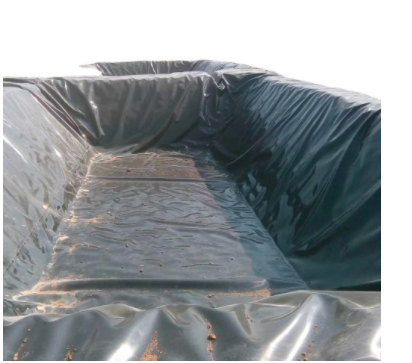- Understanding the Role of Geomembrane Liners in Waste Management
- Innovations in Geomembrane Liners for Water Management
- Geomembrane Liners: A Comprehensive Guide
- The Future of Geomembrane Liners in Civil Engineering
- Geomembrane Liners: Enhancing Landfill Stability
Manager:
WhatsApp:+86 177 0135 2670
Tel:+86 177 0135 2670
Email:marketing@okorder.com
Address:3rd Floor, No.2 Building, No.1 Sanlihe Road
The Silent Guardians: The Position and Effect of Waterproof Geomembranes
Waterproof geomembranes are the silent guardians of environmental conservation and geotechnical engineering, providing imperviousness to all elements. These man-made materials are made from polymers like high-density polyethylene (HDPE), polyvinyl chloride (PVC), ethylene propylene diene monomer (EPDM) and they have found use in a wide range of applications ranging from water containment to saving our environment.
The Versatile Workhorse: hdpe Geomembrane
In the world of geomembranes, HDPE types have earned a reputation as workhorses for their outstanding durability and resistance to chemical substances. Such membranes are produced through extrusion of high density polyethylene resin into large sheets, with thicknesses varying between 0.5mm and 3mm. Because of their strong resistance to chemicals, they can be employed as reliable covers in hazardous waste disposal sites such as landfills where leachate does not infiltrate into the soil.
The Flexible Option: pvc geomembranes
Finally PVC geomembranes present versatility and adaptability; an advantage over other types. As these are just flexible PVC sheets either calendared or laid flat on the ground. Their ability to mold around irregular structures like decorative ponds or channels has made them preferred options for water features among others.
The Heat Resistant: EPDM Geomembranes
EPDM geo-membranes demonstrate excellent elongation properties plus they can withstand very high temperatures comparatively. It is usually available in thicknesses ranging from 0.75 mm to 1.5 mm and it provides remarkable durability since it is made from synthetic rubber polymers. They also provide flexibility that enables them to be used in landscaping projects such as flat or low-slope roofing systems.
Waterproofing Practice: Dams and Canals Using Geomembranes
Dams and canals have used geo-membranes extensively for waterproofing. In Europe, this has been possible since the 1980s by employing exposed polymeric membranes that were first used in the 1960s. They act as an impervious layer, which prevents water leakage and damage to structures found in hydropower plants worldwide during rehabilitation and mitigation technology.
Rehabilitation with Geomembranes
Also notable is the use of geomembranes in rehabilitating canals. These membranes are commonly used to restore watertightness in deteriorated concrete or bituminous concrete linings with failing joints being repaired. Exposed geomembrane systems not only serve a waterproofing function but also increase water flow making them suitable for various types of canals.
The Future of Waterproof Geomembranes
Waterproof Geo-membranes will play an expanded part in sustainable engineering practices. To meet shifting environmental demands, these materials are evolving through innovation and sustainability. Research and development will go on to ensure that geo-membranes continue providing long-lasting environmentally friendly solutions.

Conclusion: The Enduring Legacy of Waterproof Geomembranes
I think about the path followed by waterproof geomembrane technology, and I am amazed at how smart people were then, when they created this technology. It’s more than just a barrier; it’s a legacy builder because we use it as the basis of our dreams of resilient infrastructure and sustainable water management. A barrier cannot be constructed without advancements because it creates a legacy that fosters good environmental stewardship through excellent engineering for several future generations. In terms of innovation towards sustainability, a new era is dawning upon us with regards to the direction taken by this industry especially through its eco-friendly beacon flashing into our faces as we think about stronger futures
- Previous:The Resolute Bond: Unraveling the Toughness of Reinforced Geomembranes
- Next:The inexorable potency of 60 mil HDPE Geomembranes- A shield for a greener environment






